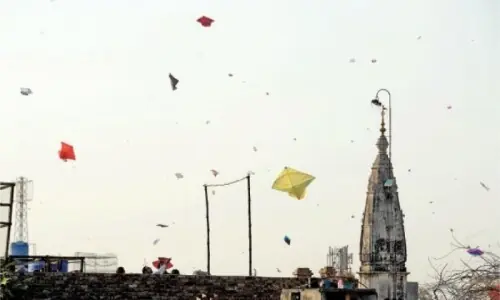MINGORA: The archaeologists have found the traces of the second missing city of Bazira that was established after the destruction of the lower city in the third century by a catastrophic earthquake.
The ancient Bazira is also known as the city of Alexander. The discovery occurred during the recent excavations in Barikot-Swat.
“Luckily we have found that missing gap. After the abandonment of the lower city in the third century, a smaller but complex urban settlement was rebuilt at the foot of Barikot Ghwandai,” Dr Luca Maria Olivieri, head of the Italian Archaeological Mission, told Dawn.
He said that archaeologists found not only the Hindu Shahi structure but also the traces of a small urban settlement and a citadel, which had been inhabited since the fourth century till the Ghaznavid time.
“The lower city, abandoned after a massive earthquake in the third century, was known as Bazira or Beira. The newly discovered city, according to an inscription found on the top of the Ghwandai, was called Vajirasthana. It means the fortified place of Bazira,” said Dr Luca.
Archaeologists discover Hindu Shahi structure and urban settlement during excavation
He said that the most important and evident remains of the citadel were a fire temple, a Hindu Shahi fortress or palace, both coeval to a Hindu Shahi temple discovered in 1988 on the top of the Ghwandai.
The archaeologists found the scattered evidence of the Ghaznavid period and also the evidence of Medieval Dardic village (dated to 12th to 15th century AD) that was ultimately occupied by the Yousafzai tribe.
According to oral histories reported both from Barikot-Swat and Barikot-Dir, by a British officer in 1912, the original inhabitants of the area fled to Dir with their own chief Barya Khan and founded a new Barikot there.
Local and foreign tourists also started visiting the newly discovered site and term it an amazing addition to the realm of Gandhara civilisation.
Nattapach, a tourist, who visited the site with a group of other Thai tourists, said that he was excited to see such amazing archaeological sites. “It was a big city having a rich history,” he told Dawn, adding that Pakistan was the home of early Buddhism and it was important for Buddhists around the world.
Kampira, another Thai tourist, said that she learnt that the early Buddhists living in Gandhara region were the first to have introduced the image of Buddha that’s why she always wanted to visit Gandhara.
“Luckily I got the opportunity to visit Gandhara in Pakistan this time. I am happy and content to visit so many ancient Buddhist sites including ancient stupas, monasteries and statues,” she said.
Published in Dawn, April 29th, 2019




































